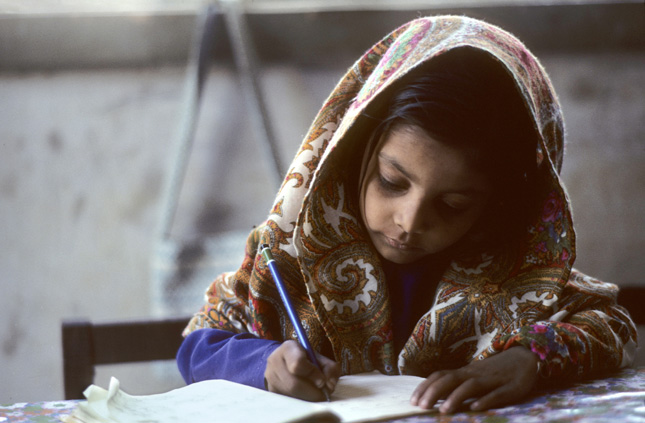-
The Economic Costs of Child Marriage
August 7, 2017 By Yuval Cohen
“It’s essentially an issue of a lack of viable alternatives,” said Quentin Wodon, lead economist for the World Bank’s Education Global Practice at a recent event on child marriage at the World Bank. “We have to create those alternatives.” Wodon co-presented the results of a new research study, “At What Cost? The Economic Impacts of Child Marriage,” by the World Bank Group and the International Center for Research on Women (ICRW).
The study found that ending early marriage could reduce fertility rates by up to eleven percent, reduce the risk of under-five child mortality and stunting, encourage girls to continue with their education, and save $566 billion globally by 2030.
The panelists—including Amit Dar and Caren Grown from the World Bank Group, Seema Jalan from the Universal Access Project & Policy, Suzanne Petroni from ICRW, and Lakshmi Sundaram from Girls Not Brides–discussed how law and policy play into countries’ national strategies to combat child marriage. Government support is crucial, but the issue requires much more than that—services must be accessible, families and communities must be supportive, and girls need to be empowered directly, said Sundaram.
“Laws and policies are absolutely necessary and helpful but are wholly insufficient on their own”“Laws and policies are absolutely necessary and helpful but are wholly insufficient on their own,” added Petroni; the challenge lies “in implementing [the laws] in the face of deeply entrenched traditions and norms that perpetuate this vision of girls having value only as a wife and a mother.”
Sundaram implored program developers to do their research and discover, “whose attitudes are you trying to shift? What are those attitudes, what will work in that particular context?” Programs that are well-rounded, with follow-ups for the children, use of media, and support from the community, are often the ones that she sees as the most successful.
With the support of governments, local NGOs, research organizations, and other key players, the path towards ending child marriage is definitely a feasible one. The most crucial thing, said Grown, is the “need to move from the perspective of a supportive policy environment to an enabling policy environment.” This means investing in keeping girls in school, providing safe alternatives for them to avoid early marriage, and fostering community support.
Read More:
- On reproductive health and HIV needs in married adolescent girls
- How girls’ education programs can combat child marriage
- On the importance of reaching girls when they are young
Photo Credit: A young girl does her school work in Karachi, Pakistan, 1983, courtesy of UN Photo/John Isaac
Topics: demography, development, economics, education, gender, On the Beat, population, poverty, youth
 A Publication of the Stimson Center.
A Publication of the Stimson Center.



